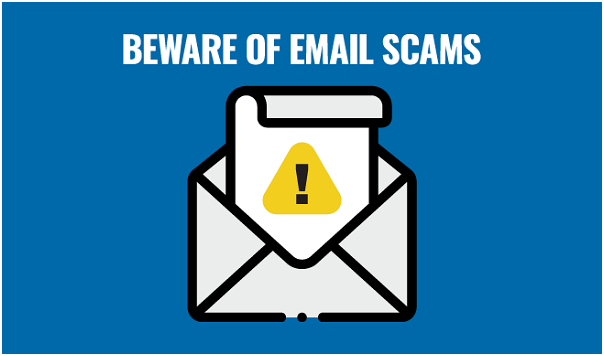
The days of random kings or royals rulers sending you their wealth are long gone. Hackers have become very adept in recent years. Even the most tech-savvy among us get fooled by them. They may vary from emails from apparently genuine websites requesting you to change your password to your employer allegedly asking you to download a file he delivered. Phishing schemes are growing more sophisticated and difficult to identify from authentic communications.
So, how can you avoid becoming a victim of data loss or having your personal information stolen? The majority of scams provide small indicators that may be used to spot dubious inquiries. The five most prevalent indicators on how to recognize a phishing email are outlined here.
1. Verify the sender’s domain name.
Examining the sender’s email is the first and simplest approach to determine whether or not the email you have got is a phishing scam. You’ve been tricked if you got an email from “Netflix” requesting you to click a link to change your password, yet the email comes from [email protected].
An @gmail.com or @hotmail.com account will never be used by a reputable organization. Be aware of domains that resemble the firm that the hacker is impersonating. To mislead consumers, a hacker may use [email protected] or something similar. Only trust an email that comes from the organization’s specific domain (in this example, @netflix.com).
PRO TIP: Compare domain names on the organization’s website that the email purports to originate from. Be aware of frequent misspellings or names that have been abbreviated! (For example, Netflicks, Googlemail, and BankofAmericards)
2. Review the email text for misspelled words and grammatical errors.
When hackers use a phishing scheme, they aren’t attempting to dupe a great number of individuals. They cast a wide net in the hopes of catching even a few people off guard. Hackers are often unconcerned with spelling or grammar as a result of this form of assault.
Pay close attention to the email’s text and look for commonly misspelled words or phrases that don’t make sense. No credible company would send an email with several typos or grammatical errors.
PRO TIP: Look for grammar flaws rather than typos. Scammers will often run their material through a spell checker, but they are often oblivious of more serious linguistic errors.
3. Keep an eye out for any suspicious attachments or links.
Malware is often disguised as genuine files by hackers. These files, once downloaded, pose a danger to not just your data but also the data of anybody on your network. Suspicious connections are treated the same way.
Before visiting a link, always double-check the URL. Legitimate links will be hosted on the company’s domain name that is sending the email.
PRO HINT: Using a mobile device and not sure how to view the link before clicking? To view the URL before you visit, keep your pointer on the link till the destination displays up.
4. Examine the situation for any urgent requests or negative consequences.
The majority of phishing schemes depend on consumers failing to verify the requests they get. The more time a user has to pick out the scam’s flaws, the less likely hackers are to succeed in their endeavor. That’s why most phishing schemes would say things like “Act immediately before we deactivate your account” or “Claim your offer now before time runs out!”
Phishing schemes not only create a feeling of urgency in individuals, but they also promise terrible repercussions if they do not respond. This is a strong indication that the email you just received is questionable. Legitimate businesses will offer you enough time to reset a lost password or double-check your sensitive data.
5. Make sure there are no generic salutations.
When you join up for a streaming service, online banking, or a newsletter, the company normally has at least your first name and will use it in their correspondence with you. Emails that begin with generic greetings like “Dear valued member” or “Dear client” should be avoided.
Even if your email address includes your first or last name, hackers send these frauds to hundreds, if not thousands, of individuals at a time and won’t bother to include your name. Remember that hackers normally throw a broad net to snag just a few victims, rather than focusing their efforts on a single person.
Last Words of Advice
If you get an email that contains one of the following, it is not always a phishing scheme. You may train yourself to detect a phishing email more quickly if you pay attention to some of the usual indications. When in doubt, contact the company (from a phone number on their official website, not from the phishing email!) A brief phone call to your local bank to verify that the email you just got is real may save you time, money, and data loss. It’s impossible to be too safe!








